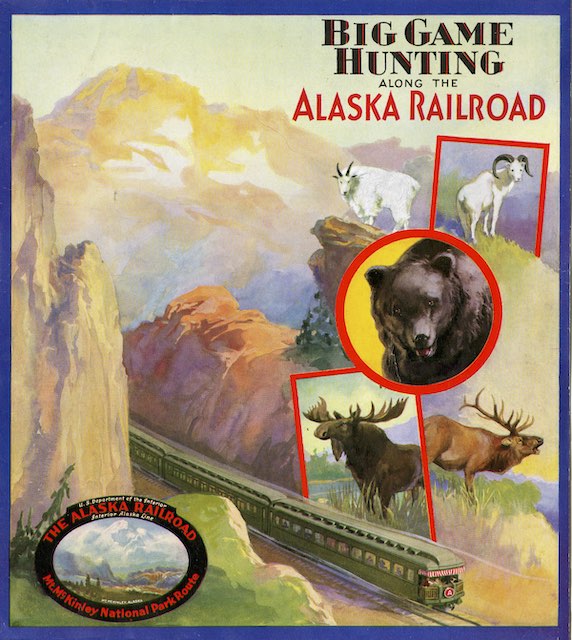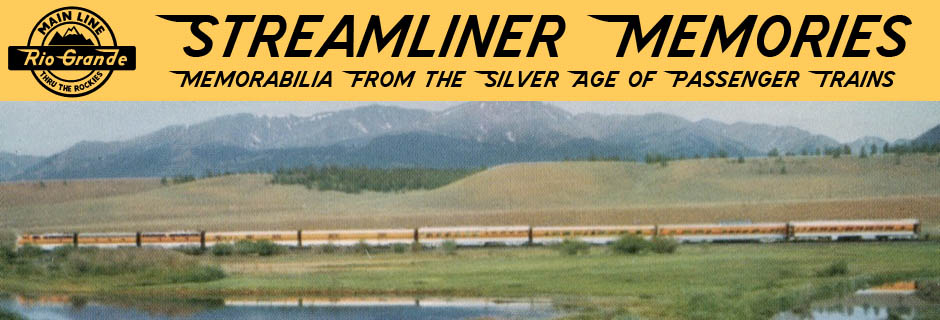The train on the front cover of this 1932 booklet appears to be going through the same rock cut as on yesterday’s 1931 booklet — except that the tracks appear to be curving to the right today while they went to the left yesterday. Also, the train cars on today’s cover don’t magically bend to follow the curve.
 Click image to download an 9.4-MB PDF of this 12-page booklet.
Click image to download an 9.4-MB PDF of this 12-page booklet.
On today’s cover, the train is joined by images of a mountain goat, big horned sheep, black bear, moose, and elk. The black bear in particular looks as friendly as a large dog, but what we are supposed to see is not cute or friendly animals but living targets we can shoot.
Those who love big game hunting seem to dominantly come from rural areas or are only a generation or so removed from rural forebears. When this booklet was issued, more than 40 percent of Americans were rural residents, as opposed to less than 20 percent today. Photos of recently killed brown bear, big horn sheep, and mountain goats that so attracted hunters in the 1930s seem repulsive to urbanites today.
Wolves, the booklet informs us, “are terribly destructive of game, and the sportsman who succeeds in bagging one has more than made up for the trophies taken by himself.” Today, of course, wolves are seen by many as a natural control on the overpopulation of elk and other species that most Americans no longer wish to hunt. For those who didn’t want to hunt in 1932, the booklet has a token page about wildlife photography.
Fish and game were so abundant in Alaska in 1932 that the annual “bag limits” on big horns, mountain goats, caribou, and bears were two each and the state didn’t even bother requiring fishing licenses. Non-resident hunting licenses were $50, more than $1,100 in today’s money, but people who had the money to get to Alaska in 1932 probably could afford a license.
The map on the back cover of this booklet is dated 1932. Maps aren’t the best indication of the date of publication as they might be used for several years. However, since the Alaska Railroad was operated by the Department of the Interior, the inside back cover lists the Secretary of the Interior as Ray Lyman Wilbur. A rubber stamp has struck this out and replaced it with Harold Ickes. Wilbur was secretary under Herbert Hoover while Ickes served under Franklin Roosevelt. This means the booklet was printed in 1932 but this particular copy was not distributed until 1933.
